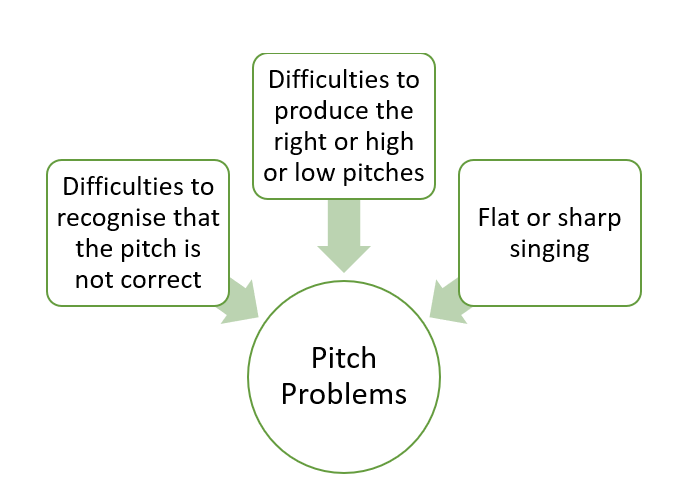Singing out of tune can be quite an embarrassment. In fact many people decline to sing at all in the fear of failing to sing the song correctly. Singing in tune is fundamental for professional singers. Choir singing in harmonies becomes very interesting if the singers sing flat or sharp – or even totally out of tune. Does singing in tune come with talent or is it a skill that can be learned?
Producing Pitches
Singing with a good pitch is a skill that can be improved by practicing. Even the best of the best sometimes face problems with the pitch. We learn to use our voices to speak and to sing when we are children. Learning to say the words clearly takes time and so does producing different pitches too.
Producing the right pitch is multitasking. We hear information about the desired pitch with our ears. It might be a harmony or a melody line or a single tune for example. After the brain has processed the information it sends ”instructions” to the muscles in the larynx to produce the desired pitch. It means adjusting the larynx and the whole voice production system in a manner that the true vocal folds can vibrate as fast as needed. The higher the voice, the more vibrating cycles per second there are. This process is a learned behaviour which becomes ”automatic” with repetition and practicing.
In order to produce different pitches the true vocal folds must stretch for higher notes and contract for lower notes. The larynx also moves up and down with the pitch but you can also lower or rise the larynx a little within the pitch to change the brightness or the darkness of the tone. Try gliding up and down with ng. Can you feel your larynx moving with the pitch?

3 Types of Pitch Problems In Singing
As mentioned above singing with the right pitch is multitasking. Problems with the pitch are often a result of the muscle work, or the lack of it. We have categorized pitch problems to three different groups:
- Problems to hear and/or produce the right pitch
- Problems to reach the pitch (often in a high or low range)
- Problems to produce the exact pitch (flat or sharp singing)
The first problem type needs training of the ears, the brain and the muscles. Second and third groups are more about training the muscles.

Some singers can’t hear that they’re singing out of tune. Other singers recognize when they are not singing the right pitch but struggle to correct it without help. It’s not uncommon for singers to have problems in reaching the right pitch in the voice quality in which they want to sing (like belting high notes or singing low notes in operatic style). However, one of the most common pitch problems is singing flat. That means that a singer is singing a right pitch but only a few Herz’s too low. This is an important topic especially in choirs in which good pitching is very important so that perfect harmonies can be created together.
Singing with a good pitch is a skill that can be improved by practicing.
Read our blog post on How to get rid of pitch problems.
Note: some singers who have perfect pitch can produce the right pitch without external influence.

